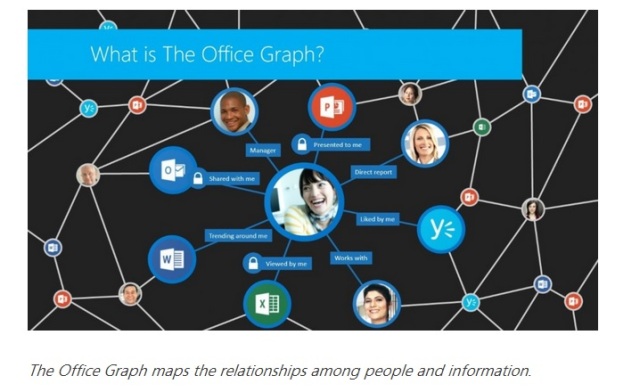The fuss around Microsoft’s announcement of “the enterprise network and the future of work” at the SharePoint Conference (SPC14) in Las Vegas this week reminded me that we have been seeking to extract better information about the complex interconnections that exist between humans working in large corporations for many years. In many respects, it’s an attempt to gather the tacit knowledge that you gain through experience and exploit that knowledge for commercial purposes.
A long time ago (in computing terms), a brilliant guy named John Churin (creator of the Digital Equipment Corporation (DEC) ALL-IN-1 Office system in the early 1980s) made an attempt to build a knowledge navigator in 1988. This was an artificial intelligence program that ran on a VAXstation to allow people to input details of who knew what and whom within the company and why they were connected. Email was used heavily within DEC to connect its 120,000+ employees, albeit not at the volume that we have today. The Internet was still in its infancy but DEC had other ways to communicate internally, such as VAX VTX (videotext) and VAX Notes (online discussion). With so much information (or so we thought) flowing through the company, an obvious need emerged to help people understand who did what across all the different business units.
John’s program forced you to enter details of people you knew, their expertise, and position. Gradually a map of connected people emerged that was built upon through contributions from multiple people, including the connections made by inference (Tony knows that John is a great COBOL programmer; John considers Don a fine programmer too, so Tony must as well). It was an interesting exercise that was too manual in terms of data capture to be of much real value, but it showed what could be done.
The next attempt to capture tacit knowledge within a large organization appeared in HP Labs, which worked on a program called “Shock” (social harvesting of community knowledge) in the 2001-2003 period. Shock was implemented as an add-in for Outlook because the knowledge that it used was largely acquired by examining the content of email to determine the expertise of people and the connections that they had within the organization. Using Outlook was a good idea because it was the predominant email client used within HP at the time. It also solved the problem of automating data collection because the data was harvested on an ongoing basis as people worked. The results were promising until we ran into the two issues of privacy and commercial viability.
The Shock project led to some discussions between HP and Microsoft to see whether it would be possible to transfer the technology and embed it into a future version of Outlook. As it happened, an advanced technology team within the SharePoint development group at Microsoft (headed by Bobby Kishore) was working on a program called the “Knowledge Interchange” in the 2003-2004 timeframe. I recall that this program was going to collect information from email, SharePoint sites, SQL databases, and web sites to create the kind of Office Graph or Enterprise Graph that appears to be envisaged in this week’s announcements. Craig Samuel, Chief Knowledge Officer for HP Services at the time and Jeff Teper, the “father of SharePoint,” were involved in the discussions between HP and Microsoft too.
Nothing much came of the talks between HP and Microsoft. The HP Labs project remained of purely academic interest and Microsoft’s knowledge interchange never appeared. I recall that privacy concerns around how people would feel about having their personal email and other contributions harvested for analysis was an issue that was never resolved, including all of the implications that exist when information travels around multi-national companies.
Ten years on, we live in a different world. We have more ways to exchange information and knowledge than ever before and the sheer volume of data that is available for consultation is staggering. People are freer about how they share information, especially those who have entered the workforce in the last ten years. And the impact of Twitter and Facebook makes some of the features brought to Microsoft by Yammer more compelling in the eyes of those who want to make a breakthrough in enterprise social networking. Perhaps privacy will be less of a concern, but I can’t help thinking about what will happen when a hidden fact that’s important to the business or a person “leaks out” or is inadvertently disclosed by social networking. There’s good and bad in everything.
I guess that we shall just have to wait and see whether the Enterprise Graph and the “Oslo” application make the anticipated impact. After 25 years of trying, it will be nice to see some success in this area.
Follow Tony @12Knocksinna



Pingback: Tony Redmond’s Guide to MEC 2014 sessions | Thoughtsofanidlemind's Blog